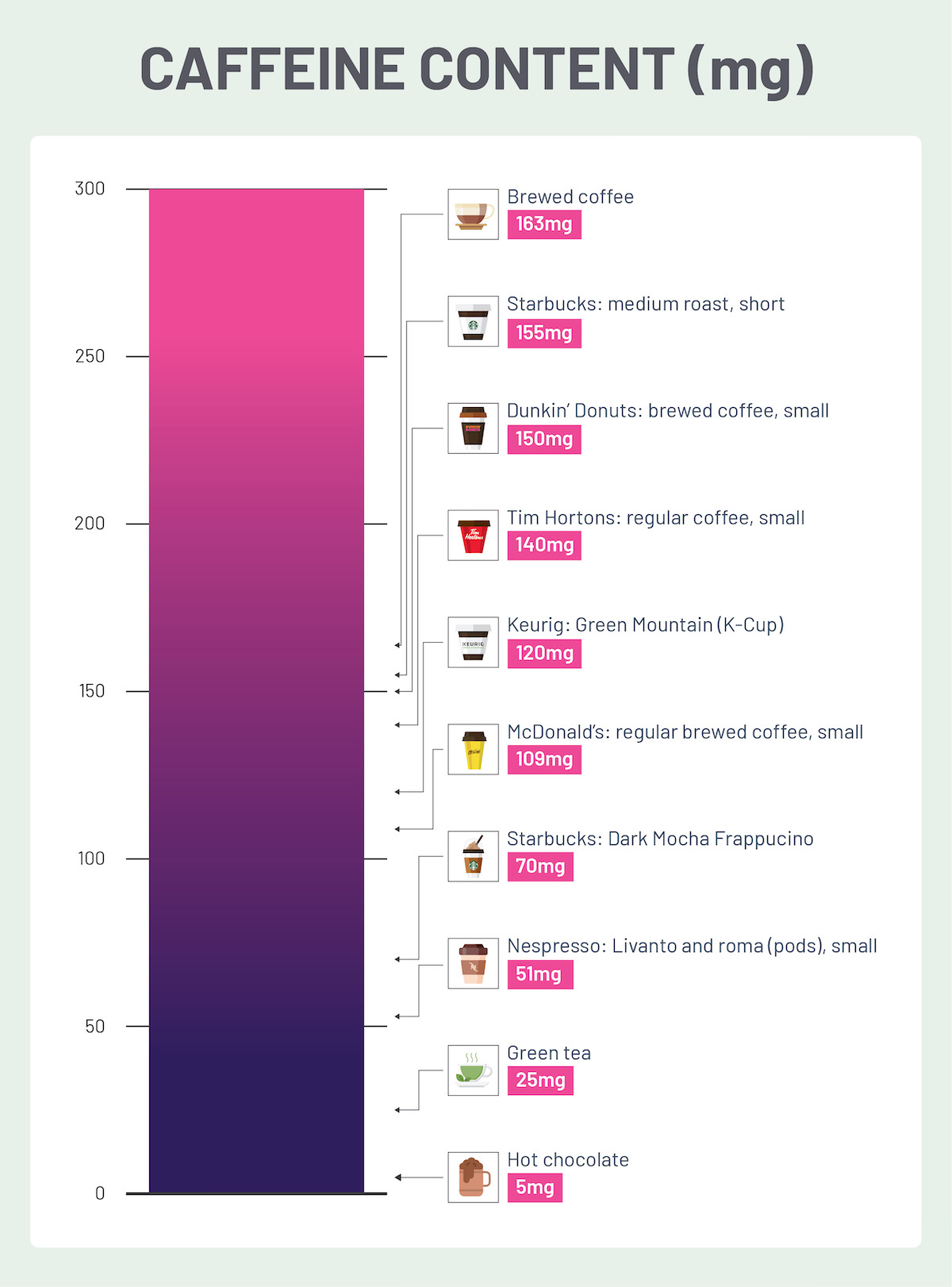Overconsumption of caffeine and caffeine dependency can have serious side effects and lifestyle implications. The best way to combat these issues is with a caffeine tolerance reset. Quitting caffeine is extremely hard, and managing withdrawals can be difficult, but there are steps to make this process easier.
The time requirements and difficulties associated with resetting caffeine tolerance vary from person to person based on factors like consumption and metabolism.
The process will generally take anywhere from a few weeks to a few months.
Once completed, however, it is easy to rebuild a healthy relationship with caffeine based on convenient and sustainable habits.
What is caffeine tolerance?
Caffeine tolerance is the diminishing response and decreasing sensitivity of your body to caffeine.
This tolerance naturally builds up over time when you consume caffeine regularly.
People with a lower tolerance can experience all of the positive effects of caffeine from a smaller amount than people with a higher tolerance.
For example, an infrequent coffee drinker may notice a strong boost in energy, mood, and focus from a single cup of coffee, while a daily coffee drinker will need the same serving to wake up and reach baseline cognition.
How does caffeine tolerance work?
Caffeine increases energy levels by preventing signals of tiredness and energy depletion in the brain. It does this by blocking adenosine receptors.
In response, the brain creates more adenosine receptors to combat caffeine’s blockade.
This allows more area for the signaling to take place, and therefore more potential to feel tired.
In turn, you’ll have to consume more caffeine the next time to block the same proportion of this signaling.
In other words, the brain adapts to caffeine by working around it, creating a vicious cycle of consuming more and more caffeine.
When is it time for a reset?
A caffeine reset can be beneficial, whether it’s a slight dependency or an all-out addiction.
Overconsumption

The FDA recommends no more than 400 milligrams of caffeine – about 4-5 cups of coffee – per day.
Exceeding this dosage can pose dangers to your health. It may be time to reset if your daily caffeine intake is at or above this limit.
The following graphic can help you estimate your daily caffeine intake:

Some side effects of overconsuming caffeine include:
- Insomnia
- Jitters
- Anxiousness
- Fast heart rate
- Upset stomach
- Nausea
- Headache
- A feeling of unhappiness (dysphoria)
If you find that you are overconsuming caffeine, a caffeine detox and tolerance reset can help.
Dependency
For more moderate caffeine users, there are still plenty of reasons to consider a tolerance reset.
In my experience, avoiding any dependency on caffeine is ideal.
Caffeine is best used situationally and in moderation. When it becomes a daily necessity for basic functions, problems can arise.
Some of the issues associated with building up a high caffeine tolerance include:
1. Diminished energy boost and increased fatigue
As your tolerance builds up, you will feel the effects of caffeine less. You may also notice the opposite effects, like tiredness and fatigue, in the absence of strong doses of caffeine.
2. Headaches
You may start to notice frequent headaches and other withdrawal symptoms even during short periods in between consuming caffeine.
3. Digestive issues
Acid reflux, stomach discomfort, and irregular bowel movements can be associated with frequent caffeine consumption.
4. Decreased concentration
Sustaining focus may become more challenging.
5. Mood fluctuations
Irritability, anxiety, and feelings of depression become more common with a high caffeine intake.
6. Trouble sleeping
Frequent consumption may disrupt sleep patterns and lead to difficulty sleeping.
7. Cravings
With a higher caffeine tolerance and lower sensitivity comes a dependence on caffeine to feel and function normally.

It is also important to consider how much you will spend to maintain your caffeine tolerance.
At a coffee shop, the average price of a cup of coffee is up to $4.90 in the United States.
For energy drinks, costs average between $1.50 to $4.50. These costs can add up quickly.
You may find that resetting caffeine tolerance and thereby requiring caffeine less frequently will free a lot of strain on the wallet.
How to reset my caffeine tolerance?
When you decide that it’s time to break the cycle of caffeine tolerance and reset your natural sensitivity to caffeine, there are a few different courses of action to take.
1. Cold turkey approach
If you are looking for the fastest way to reset your caffeine tolerance or to get the caffeine out of your system as soon as possible, the best approach is usually the simplest: cut out caffeine completely.
It takes 6-10 hours for the effects of caffeine to wear off, but resetting your caffeine tolerance will take at least 2 weeks and up to 2 months.
You need to allow this time for your brain to adjust to the absence of the drug.
Pro: This is the fastest way to reset caffeine sensitivity completely
Con: Quitting cold turkey will most likely induce withdrawals. We will discuss more on this later.
2. Gradual reduction
It is also possible to get back to baseline by gradually reducing caffeine intake.
The best advice for this method is only to consume as much as you need to stave off withdrawals.
Try to avoid reaching for your coffee or energy drink habitually. Keep track of your consumption, and aim to reduce that amount each day.
Eventually, you must cut down to zero to reset your tolerance fully. Then, wait at least two weeks before consuming again.
Pro: You won’t be faced with any severe withdrawal symptoms, and the process of quitting is more manageable. This is best if you need to maintain high levels of productivity.
Con: This method extends the process of resetting your tolerance and may only prolong the discomforts of quitting.
How to manage my caffeine withdrawals?
The biggest reason why people maintain their caffeine habit is to avoid withdrawals.

Caffeine withdrawals include symptoms like:
- Headaches
- Tiredness
- Difficulty concentrating
- Nausea
- Muscle pain
- Irritability
Frequent caffeine users will likely experience several of these symptoms while cutting back, especially cold turkey.
The most tried and true methods of managing these symptoms are:
- Drink plenty of water
- Maintain a consistent sleep schedule, sleeping 8 hours each night.
- Use over-the-counter headache and pain relievers when necessary, and make sure they aren’t caffeinated.
- Try decaffeinated coffee, tea, or other beverages, allowing yourself to maintain the habit of sipping on such drinks.
I have also found that allowing the natural light to wake me up in the morning and getting straight out of bed helps me feel more energized and focused throughout the day.
How to establish healthy caffeine habits?
Resetting caffeine tolerance provides a blank slate to establish new and sustainable caffeine habits.
Generally, it is best only to use caffeine when you need it most and avoid it whenever possible.
This way, you can maintain a high sensitivity to caffeine’s effects and take advantage of all of its benefits when necessary.
You can avoid the symptoms of overconsumption and withdrawals and avoid dependency.
If you are ready to commit to a caffeine regimen, see the section below on long-term sensitivity maintenance.
Otherwise, you can always stick to a few guiding principles to ensure a healthier relationship with caffeine. These include:
- Don’t drink caffeine immediately after waking up. It is best to let your body get used to waking up naturally. The effects of caffeine are also less pronounced when you first wake up, as your cortisol is highest. Wait 2-3 hours for the most benefit, then drink your caffeine.
- Don’t drink caffeine every day. Your tolerance will slowly but surely build up, and you will stop feeling the effects.
- Stop drinking caffeine at least 6 hours before bed. At the end of six hours, about half of the caffeine you consume will still be in your blood. Sleep supplements like melatonin will likely be unable to help.
- Don’t consume caffeine unless you need it. This includes caffeinated foods and soda. Opt for decaf, and save caffeine when you need it.
- Maintain a consistent sleep schedule and allow yourself to wake up naturally.
How to maintain caffeine sensitivity for the long term?
The best way of ensuring you maintain a low caffeine tolerance long term is to stick to a regimen. Set rules for yourself and abide by them.
One way of doing this is to cut out heavily caffeinated drinks daily and only drink them when absolutely necessary.
For example, you may need to sip on an energy drink to stay alert through an overnight road trip.
Or, you may need strong focus for several hours while preparing for a big exam, meeting, or presentation.

Some people use caffeinated pre-workout drinks from time to time when they are really dreading going to the gym.
All of these are isolated use cases for caffeine, and it is unlikely that you will build up a dependency in this manner.
Another method, my personal favorite, is to set a routine that allows for infrequent caffeine consumption.
For example, I like to drink a single cup of coffee on Mondays, Wednesdays, and Fridays.
I only drink 3-4 cups of coffee weekly and always make sure to get the most out of them.
I block off long periods for productivity and take advantage of my low caffeine tolerance to stay locked in and get through large amounts of work.
I can still be productive on off days and weekends because I can function normally without caffeine.
References:
- https://www.merckmanuals.com/home/drugs/factors-affecting-response-to-drugs/tolerance-and-resistance-to-drugs
- https://www.ncbi.nlm.nih.gov/pmc/articles/PMC4373791/#:~:text=The%20levels%20of%20cortical%20and,2a%2Dadenosine%20receptors%20is%20unaltered
- https://www.fda.gov/consumers/consumer-updates/spilling-beans-how-much-caffeine-too-much#:~:text=For%20healthy%20adults%2C%20the%20FDA,associated%20with%20dangerous%2C%20negative%20effects
- https://www.businessinsider.com/coffee-prices-increases-inflation-drought-frost-2022-8#:~:text=At%20coffee%20shops%20nationwide%2C%20a,by%20The%20Wall%20Street%20Journal
- https://www.thepricer.org/the-cost-of-energy-drinks/
- https://my.clevelandclinic.org/health/articles/15496-caffeine-how-to-hack-it-and-how-to-quit-it#:~:text=The%20level%20of%20caffeine%20in,clear%20caffeine%20from%20your%20bloodstream
- https://www.healthline.com/nutrition/best-time-to-drink-coffee#cortisol-coffee


